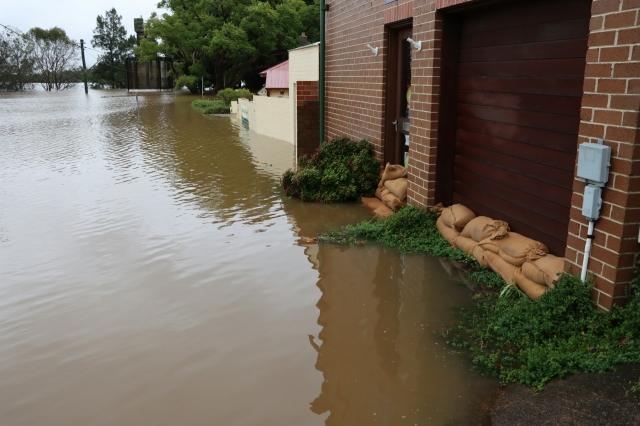Water damage is a major concern for homeowners, often resulting in expensive repairs and weakening the home's structural integrity. According to data from the Insurance Information Institute, water damage and freezing accounted for almost 23% of all insurance claims from 2017 to 2021. This underscores how frequent and destructive these incidents can be, as reported by This Old House.
While many homeowners focus on fixing leaks after they happen, the key to protecting your home is taking proactive steps to prevent water intrusion. By regularly monitoring and maintaining key areas in and around your home, you can greatly reduce the risk of water damage. This will help protect your property for years to come.
This guide will outline essential steps to keep water where it should be; outside your home.
Roof and Gutters: The First Line of Defense
Your roof is the most critical barrier against the elements, and its health is paramount in preventing water damage. Over time, shingles can become loose, cracked, or missing, leaving your home vulnerable. It's important to regularly inspect your roof, particularly after storms, to catch any issues early.
Addressing minor damage, like replacing a few shingles or fixing small leaks, can be relatively inexpensive; between $150 and $1,500, according to Forbes. However, neglecting these small repairs can lead to more severe and costly problems.
Major roof repairs, which often require professional intervention, can escalate up to $8,000. Staying proactive with roof maintenance helps avoid these expensive fixes and keeps your home protected.
Equally important are your gutters and downspouts. These systems direct water away from your roof and foundation. Clogged gutters can cause water to overflow and pool near your foundation, leading to leaks and even structural damage. Clean your gutters at least twice a year, and consider installing gutter guards to prevent debris buildup.
How much does professional gutter cleaning typically cost?
CNN reports that professional gutter cleaning typically costs between $75 and $450. The exact cost can vary based on several factors, including the size of your home and the extent of the cleaning needed. Additional services, like gutter repairs or downspout cleaning, may also affect the overall cost.
Fascia Boards: Protecting Your Roofline
When inspecting your roof and gutters, be sure to also check the fascia boards. These boards, which run along the roof's edge, support the gutter system and enhance your home's exterior appearance.
Over time, fascia boards can suffer damage from water, particularly if gutters overflow or ice dams form. Such damage can lead to water seeping into the roof structure, causing rot and mold. It's important to regularly assess the condition of your fascia boards and replace them if they show any signs of wear.
Belco Forest Products suggests opting for materials like PVC or composite wood instead of traditional wood, as they offer superior resistance to water damage. These materials handle moisture and severe weather better, extending the life of your fascia boards and protecting your home from water damage.
Windows and Doors: Sealing the Cracks
Windows and doors are common entry points for water, especially during heavy rain or wind-driven storms. Inspect the caulking and weatherstripping around your windows and doors annually. If the caulking is cracked or missing, water can easily seep into your walls, leading to mold growth and structural damage.
Consider upgrading to storm-resistant windows and doors if you live in an area prone to severe weather. These options provide an extra layer of protection and can significantly reduce the risk of water infiltration.
Why are coastal regions more susceptible to water damage?
Coastal regions are vulnerable to water damage due to their exposure to hurricanes, storm surges, and high humidity. Coastal areas such as Florida, Texas, and parts of the Northeast often face severe weather events that can cause flooding and water damage.
Basement and Foundation: The Silent Threat
Your home's foundation and basement are especially vulnerable to water damage, especially in areas with a high water table or heavy rainfall. Cracks in the foundation can let water seep through, causing basement flooding and serious structural problems. It's a common issue. Forbes highlights that 98% of homes will face some kind of basement water damage at some point.
To protect your foundation, ensure that the ground around your home slopes away from the building. This prevents water from pooling near the foundation and finding its way inside. Additionally, consider applying a waterproof sealant to your basement walls and floors to keep moisture out.
Plumbing System: Preventing Internal Leaks
Water damage doesn't just come from external sources; your home's plumbing system can also be a major culprit. Leaking pipes, especially those hidden behind walls or under floors, can cause extensive damage before they're even detected.
The EPA highlights that household leaks are a significant problem, with the average home wasting nearly 10,000 gallons of water each year. Furthermore, around 10% of homes have leaks that waste 90 gallons or more each day. These leaks often come from common sources like worn-out toilet flappers, dripping faucets, and faulty valves.
To avoid water damage, routinely check exposed pipes for rust, corrosion, or minor leaks, as these can signal more serious problems. Installing a leak detection system can help you identify issues early, often before they lead to major damage.
Also, make sure you know where your main water shutoff valve is located so you can swiftly address emergencies like burst pipes.
How does a leak detection system work?
Leak detection systems use various types of sensors, such as moisture sensors or acoustic sensors, to detect leaks. When a sensor detects abnormal moisture levels or sounds associated with a leak, it triggers an alert. You will be notified through a smartphone app, email, or an audible alarm.
Overall, preventing water damage is all about vigilance and regular maintenance. By keeping an eye on these crucial areas, you can prevent expensive repairs and maintain a safe, dry home. This proactive approach will help keep your property in good shape for years. Remember, a bit of preventive maintenance now can save you from significant trouble later on.






